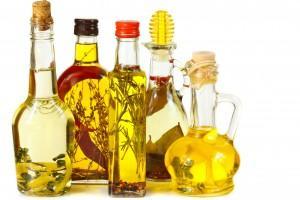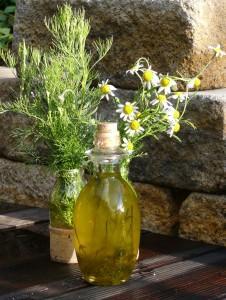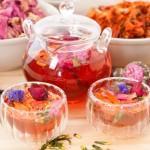 Herbal Infusion
Herbal Infusion
Many times the herbs that we seek out to use in a bath or body recipe may be a little too coarse (physically speaking) for our skin. This is the point where typically a conundrum lies. The battle that is at hand is the great skin loving nutrients and benefits that herbs are able to provide versus the rigidity and awkwardness of the herbs physical form. This is especially true for herbs that are cut and sifted.
There is however great news to share. An herbal infusion is the problem solver in this situation.
What is an Herbal Infusion: The true definition of the action of infusion is a procedure of withdrawing various nutritive compounds of an herb into a solvent, and allowing them to linger in the solvent for a period of time. Basically, an herbal infusion is the method of extracting the medicinal benefits of herbs and steeping them to allow the transfer of herbal benefits into another medium.
There are four different kinds of herbal infusions that can be made. They all vary according to what medium is used. The different solvents or mediums that can be used for an herbal infusion are water, oil (such as olive oil, apricot kernel oil, or sweet almond oil), vegetable glycerin, vinegar, propylene glycol, or alcohol. Typically, herbal infusions made with alcohol or vegetable glycerin are referred to as tinctures or extracts.
Infusions are necessary with some herbs due to their delicate nature. Typically the fragile parts of the plant are used for infusions; this would be the parts that are above ground. These parts would include: leaves, flowers, stems, or aromatic pieces. It is important to know your herbs and understand their nature before deciding the best infusion route to take.
Hot infusions:
Hot infusions will bring out vitamins, and enzymes. This type of infusion will also allow the aromatic notes of the herbs out, which are also known as essential oils. This method works best for the herbs that are a little more reluctant to forgo their medicinal characteristics. This is generally the herbs in the form of barks and roots; although all portions of the plant can be used. Herbal tea is the most popular example of a hot herbal infusion.
Cold infusions:
Cold infusions are best for herbs that have a heat sensitive nature. Using the hot method with these types of herbs may eliminate some of the remedial properties. This process is best for these types of herbs because through steeping (allowing a plant material to set in a medium undisturbed), they will release their medicinal attributes without being forced to do so with heat.
It is believed that the best types of herbs to use for an infusion are dried ones. This is because nourishing minerals and phytochemicals that are naturally in herbs are best accessed by the drying out of the herb. However, fresh herbs may also be used.
Depending on the method of your herbal infusion, it will vary the strength of the infusion itself. Another deciding factor with infusion is the time that your herbal infusion will take as well as the deadline of your need for the infusion. There are several different ways varying in strength and steep time that you can infuse herbs.

Oven Extraction: The best method to use if you have selected a heat sensitive oil as your solvent and you are in a time crunch. This method involves placing your herbs and solvent in a glass jar. You will also want to make sure that you have it covered with a tight fitting lid. Once sealed, select a deep cake pan and fill it with water. The water level should rise to cover about half of your jar. Then, simply place your deep cake pan into the oven and allow it to heat for several hours. You want to make sure your oven temperature is on its lowest setting. Once the time has passed, strain the herb out and allow the infusion to reach room temperature before using.

Double Boiler: This method is done by placing the herbs and oil in a lidded pot with the tightest lid possible. Example recipe: 45 grams white sage leaves + 14 oz. of apricot kernel oil. Next, take a second bigger pot and place water into it. Then, place the bigger pot on the stove top and set it on a lower temperature setting. Next, place the smaller lidded pot containing your herbs and oil into the bigger one. Allow this to simmer slowly for 30 minutes to an hour. Throughout the time, continuously check your oil to make sure it is not overheating, and stir. After the time has elapsed, strain the herbs out using a cheesecloth. Allow the infusion to reach room temperature before using.
Tips for Infusions:
You can add extra scent to your infusion by adding fragrance oils or essential oils.
You can place the herbs that you will be infusing into a teabag or cheesecloth to help make the straining process easier.
No matter which method of infusion you are doing, a tight fitting lid is essential to the process.
Uses for Infusions:
Water infusions can be used as a hair rinse. This rinse can be left on the hair until the next time you shampoo.
Water infusions can be ingested as a tea (hot or cold) as long as the herb is safe for consumption. Some herbs cannot be ingested at all, and can be deadly if consumed. Check with your doctor before ingesting any herbs. Honey can be added to make the taste of the tea more favorable. If you have remaining infusion, refrigerate to slow spoilage rate.
Herbal infusions can be applied directly to the skin. Oil infusions can be used for oil based bath and body products like massaging oils.
Herbal infusions can be inhaled for aromatherapy purposes.
Oil infusions can be bases for salves and balms.
You can use an oil infusion for emulsion products like sugar scrubs, lotions, and soaps.
Natures Garden sells our herbs for external applications only. We are providing this information for herbal infusions for educational purposes only. Nothing we mention should be construed as medical advice or for medical treatment purposes. Please consult your doctor before using any herbs for treatment or other medicinal purposes.

